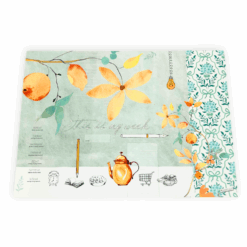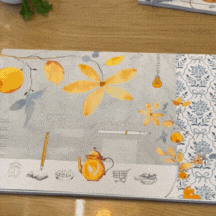Recipes
Christmas cookies from different countries
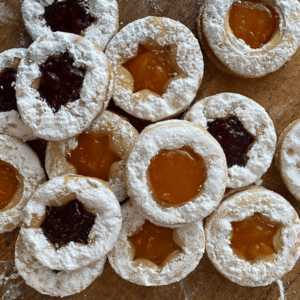
Austrian linzer cookies
– 175 g (1 & 1/3 cup) flour
– flour to dust your worktop
– 1 egg yolk
– 150 g (2/3 cup) softened butter
– icing sugar
– 1 tsp vanilla essence
– 75 g (1/2 cup) ground almonds
– 1/2 jar of raspberry or apricot jam
– salt
Add the icing sugar, butter and vanilla essence to a bowl and beat for around 5 minutes. Then add the egg yolk, ground almonds, flour and salt and knead to create a smooth dough. Leave to stand in the fridge for 30 minutes.
Preheat the oven to 170 °C. Dust your worktop with flour and roll the dough out to a thickness of 5 mm. Cut out circles with a diameter of 8 cm and place them on a baking sheet lined with baking paper. Cut a hole in the middle of half of the circles, using a smaller circular or star-shaped cutter. Use the cut out dough to make more circles and keep going until you have used up all the dough.
Place the baking sheet with all the cookies on it in the centre of the oven for around 15 minutes, until the cookies are golden. Remove them from the oven and allow them to cool. Spread some jam on the cookies without holes. Sprinkle some icing sugar over the cookies with holes and then place these on top of the cookies spread with jam.

German Christmas biscuits
– 500 g (3 & 3/4 cups) flour
– flour to dust your worktop
– 4 eggs
– 250 g (1 cup) butter
– 200 g (1 cup) sugar
– 100 g (3/4 cup) ground almonds
– 1 tsp vanilla essence
– 1 tsp baking powder
Take the butter out of the fridge to soften, so it is easier to work with. Combine the flour, ground almonds, vanilla essence and baking powder. Add the softened butter, eggs and sugar. Knead to form a sticky dough.
Dust your worktop with flour and roll the dough out into a thin sheet. Use a Christmas tree biscuit cutter to make the biscuits and then arrange them on a baking sheet lined with baking paper.
Preheat the oven to 170 °C. Place the baking sheet with the biscuits on in the middle of the oven for around 10 minutes.
Allow the biscuits to cool. Decorate the biscuits with piped icing. I drew on some green branches and red baubles.
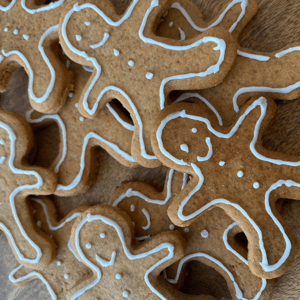
American gingerbread cookies
– 330 g (2 & 1/2 cups) flour
– flour to dust your worktop
– 125 g (1/2 cup) butter
– 75 g (1/3 cup) caster sugar
– 2 tsp baking powder
– 135 g (1/3 cup) molasses
– 3 tsp ground cinnamon
– 3 tsp ground ginger
– salt
Preheat the oven to 190 °C. Add the caster sugar and softened butter to a bowl and beat until light and fluffy. Add the salt, molasses, cinnamon and ginger then mix together. Sieve the baking powder and flour together, then add these to the butter mixture. Sprinkle flour on your worktop and knead to form a sticky dough before leaving to stand in the fridge for about half an hour.
Now roll the dough out into a sheet about 4 mm thick. Cut the cookies out with a gingerbread man cookie cutter.
Line the warmed baking sheet with baking paper and arrange the cookies on top. Bake the cookies for around 10 minutes, until golden brown. Then take them out of the oven and leave them to cool. Decorate the cookies with piped icing.
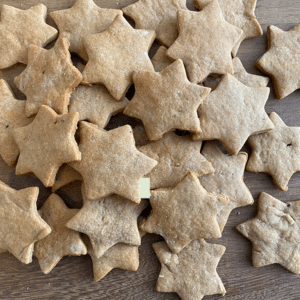
Swedish pepparkakor
– 380 g ( 3 cups) flour
– flour to dust your worktop
– 75 ml (1/3 cup) water
– 150 g (3/4 cup + 1 tsp) dark brown sugar
– 105 g )1/3 cup) treacle
– 150 g (2/3 cup) unsalted butter
– 1 tbsp ground ginger
– 1 tbsp ground cinnamon
– 1 tsp ground cloves
– 1 1/2 tsp baking soda
Add the water, treacle and sugar to a pan and heat until the sugar has dissolved. Add the butter, warm over a low heat and stir until the butter has melted. Now add the spices. Stop stirring and allow the mixture to cool.
Add the flour and baking soda to a bowl. Add the cooled sugar mixture. Knead the dough, wrap it in cling film and leave it in the fridge overnight.
Preheat the oven to 180 °C. Dust your worktop with flour and roll the dough out into a thin sheet. Use a star-shaped cutter to make biscuits. Line a baking sheet with baking paper, arrange the biscuits on top and bake then for 7 to 8 minutes.
Allow the biscuits to cool on the baking sheet.
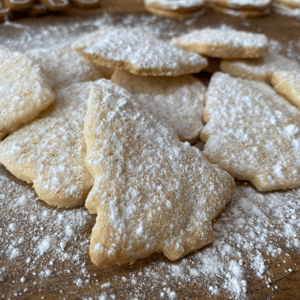
Spanish polvorones
– 250 g (2 cups) flour
– flour to dust your worktop
– 120 g (3/4 cup) ground almonds
– 2 tsp aniseed
– zest of 1 lemon
– 250 g (1 cup + 1 tbsp) softened butter
– 250 g (2 cups) icing sugar
– 1 1/2 tsp ground cinnamon
– icing sugar for dusting
– salt
Add the flour to a saucepan and heat it whilst stirring until it begins to colour slightly. Remove it from the heat and leave it to cool.
Pound the aniseed to a powder with a pestle and mortar. Combine the ground almonds, cinnamon, aniseed and lemon zest, then add salt.
Preheat the oven to 175 °C. Mix the butter and the icing sugar for 5 minutes, until they are creamy. Add in the flour mixture. Dust your worktop with flour and knead to form a sticky dough. Flatten the ball of dough on a piece of baking paper. Add another piece of baking paper on top and roll it out to form a crumbly sheet of dough around 1.5 cm thick. Choose a fairly large biscuit cutter to cut out shapes and arrange these on a baking sheet covered with baking paper. Place the biscuits in the middle of the oven and bake them for about 25 minutes. Remove the biscuits from the oven and allow them to cool on a baking sheet. Sprinkle with icing sugar.
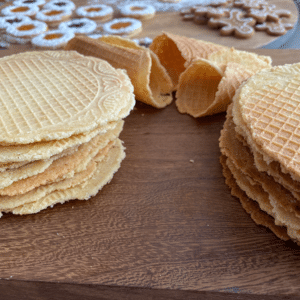
Dutch kniepertjes
– 500 g (3 & 3/4 cups) flour
– 2 eggs
– 200 g (3/4 cup + 1 tbsp) butter
– 1 tsp vanilla essence
– 200 g (1 cup) white caster sugar
– 200 g (1 cup) white granulated sugar
– cinnamon
– salt
Brush the waffle iron with a little butter and heat it up.
Mix the ingredients in a bowl at room temperature to form a firm dough. Roll the dough into balls between 2.5 and 3 cm thick. Place a ball in the centre of the waffle iron, close it and bake each waffle for around a minute until golden brown.
Lay the kniepertjes flat and allow them to cool. You can also roll them up, but you need to do that as soon as you take them out of the waffle iron. Real caster sugar and granulated sugar will make your waffles nice and crispy.





